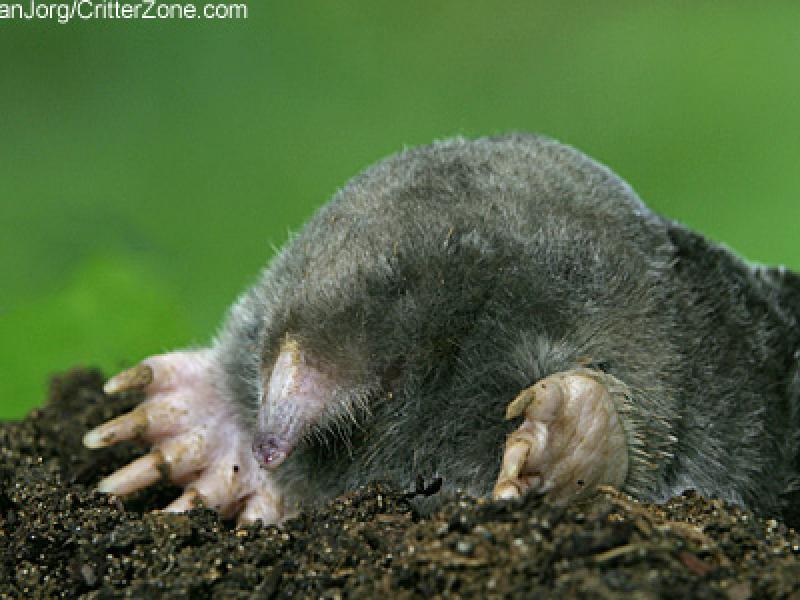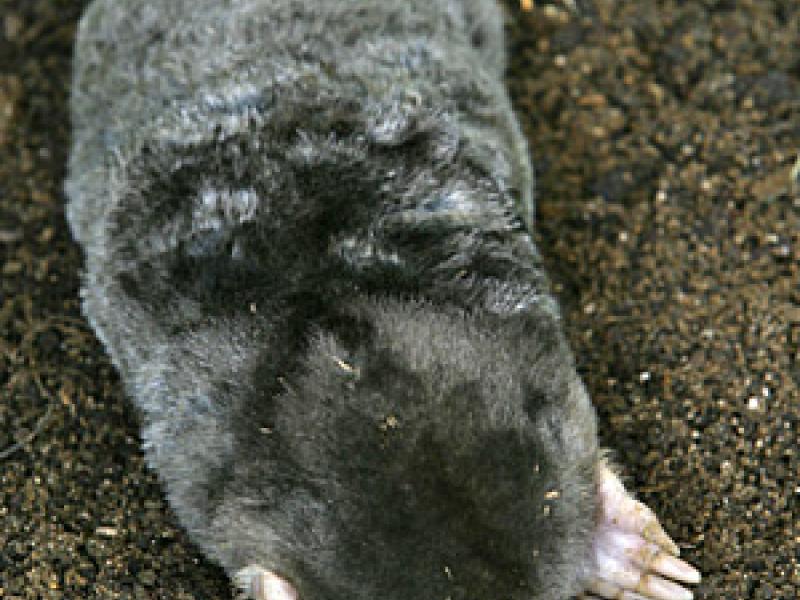Photo Credit: Brian Jorg/CritterZone
Critter Zone Wildlife Photography
SCIENTIFIC NAME:
Scalopus aquaticus
OTHER NAMES:
Tunnel Rats, Blind Diggers
STATUS:
Poorly known. Found statewide and common in a variety of habitats. Low Conservation Concern.
DESCRIPTION:
The eastern mole (Scalopus aquaticus) averages about 4 ounces in weight and 7 inches in length. The body is covered with a velvety thick fur that ranges in color from black to silver to copper. They have a short, round tail that is covered in scales instead of hair. Moles have large front feet with webbing between the toes that aid in digging. The hind feet are small and narrow, with slender, sharp claws. They have a hairless, pointed snout extending nearly ½ inch in front of the mouth opening. They have no visible eyes and ear openings are concealed in their fur.
DISTRIBUTION:
There are seven different species of moles in North America, but the eastern mole is most common. They are found from the southern tip of Florida to Ontario and from Wyoming to central Texas. There are also small populations in southwest Texas and in northwestern Mexico.
HABITAT:
Eastern moles prefer meadows, pastures, fields, and open woodlands. They prefer soils that are sandy to loamy in texture. Moles live in the seclusion of underground burrows and rarely come to the surface. The runway systems created by moles are also utilized by voles, house mice, and white-footed mice. They prefer to make their burrows in dry, high spots, but choose to hunt in soil that is cool, moist, and populated by worms and grubs. Denning areas are commonly found under large trees or sidewalks. Moles are often considered pests, but they can be beneficial by aerating the soil where they live.
FEEDING HABITS:
The diet of Scalopus aquaticus consists mainly of grubs, worms, insects and plant material. They expend an enormous amount of energy while digging tunnels. For this reason, they eat 70% to 100% of their weight each day. Moles are often blamed for damaging plant’s root systems, but this damage is probably caused by mice that use their passageways. Rainy periods during the summer months are when they are most actively feeding.
LIFE HISTORY AND ECOLOGY:
Breeding takes place in late March or early April throughout most of its range. Gestation usually lasts around five weeks, and litters consist of two to five young. Mothers nurse and care for their young for a month before they are weaned. They continue to share their mother’s tunnels until they are able to establish a new tunnel system in a different location. Moles do have enemies such as skunks, badgers, dogs, and coyotes, but floods during March and April are their greatest danger.
REFERENCES:
Godfrey, G., and P. Crowcroft. 1960. The life of the mole. London Museum Press, 152 pp.
AUTHOR:
Frank Allen, Wildlife Biologist, Alabama Division of Wildlife and Freshwater Fisheries, November 2006







